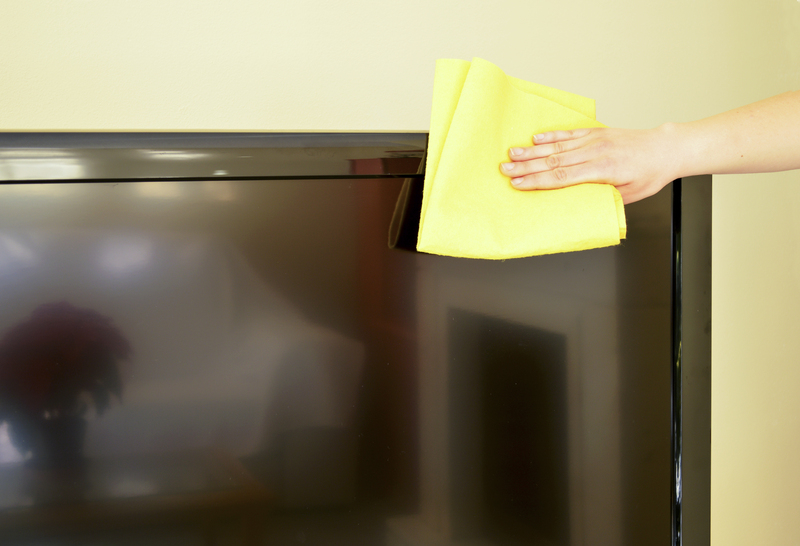Transforming Your Dirty Kettle into a Shiny Appliance: A Comprehensive Descale Guide
Posted on 17/05/2024
A kettle is a must-have appliance in every household, used for boiling water to make tea, coffee, or other hot beverages. However, with time and regular use, it's common for kettles to accumulate mineral deposits and become dirty and unsightly. Not only does this affect the appearance of your beloved appliance, but it can also impact its functionality and even pose health risks. But fear not, with the right descaling methods, you can easily transform your dirty kettle into a shiny appliance once again. In this comprehensive guide, we will walk you through everything you need to know about descaling your kettle effectively.
Understanding the Need for Descaling
Before we dive into the steps of descaling your kettle, it's essential to understand why this process is necessary. Over time, minerals like calcium and magnesium from hard water can build up inside your kettle's heating element and on its walls. This build-up not only affects the taste and appearance of your drinks but also decreases the efficiency of your kettle and shortens its lifespan. Moreover, as these minerals are not always visible to the naked eye, they can lead to bacteria growth inside the kettle, which can cause health issues if ingested.

Step-by-Step Guide for Descaling Your Kettle
1. Gather Your Supplies
To successfully descale your kettle, you will need some basic supplies such as white vinegar, a scrub brush or sponge, water, lemon juice (optional), and a soft cloth.
2. Prepare the Solution
Firstly, start by filling your kettle with equal parts water and white vinegar or lemon juice if you prefer a more natural solution. Make sure you do not overfill the kettle, as it may boil over during the process.
3. Boil the Solution
Once filled with the solution, turn on your kettle and bring it to a boil. Let it boil for 10-15 minutes to give enough time for the vinegar or lemon juice to work its magic on the mineral deposits.
4. Let It Sit and Cool
After boiling, turn off your kettle and let it sit for at least an hour, allowing the solution to break down the mineral build-up inside your appliance.
5. Scrub Away the Deposits
Next, using a scrub brush or sponge, gently scrub away any remaining build-up from the kettle's walls and heating element. Be careful not to use any abrasive tools that may damage the surface of your kettle.
6. Rinse Thoroughly
Once you have scrubbed away all the deposits, rinse your kettle thoroughly with water multiple times to ensure all the vinegar or lemon juice is removed.
7. Wipe Clean and Dry
Finally, using a soft cloth, wipe clean the exteriors of your kettle and make sure it is entirely dry before using it again.
Tips for Maintaining a Clean Kettle
o Use filtered water: To prevent mineral build-ups in the future, consider using filtered water in your kettle instead of tap water.
o Clean your kettle regularly: Regular descaling can help maintain a clean and efficient appliance. We recommend descaling your kettle once every month.
o Avoid leaving water in the kettle: After making your hot beverage, make sure to discard any leftover water in the kettle instead of leaving it sitting inside. This will prevent mineral deposits from forming.
Takeaways
Now that you know how to descale your kettle effectively let's take a quick look at some of the key takeaways from this comprehensive guide:
o Descaling your kettle is necessary to maintain its appearance, functionality, and prevent health risks.
o You can use white vinegar or lemon juice as natural solutions to effectively remove mineral deposits.
o Keep your kettle clean by using filtered water, cleaning it regularly, and avoiding leaving water inside after use.

Pros and Cons of Descaling Your Kettle
Pros:
o Improves taste and appearance of hot beverages
o Increases the lifespan of your kettle
o Removes bacteria and potential health risks
o Easy and cost-effective method
Cons:
o Time-consuming process
o Requires regular maintenance
Conclusion
Sipping on a hot cup of tea or coffee from a clean and shiny kettle is an experience like no other. With this comprehensive descale guide, you can easily transform your dirty kettle into a spotless appliance once again. Make sure to follow these steps regularly to maintain your kettle's cleanliness and functionality. Happy descaling!






